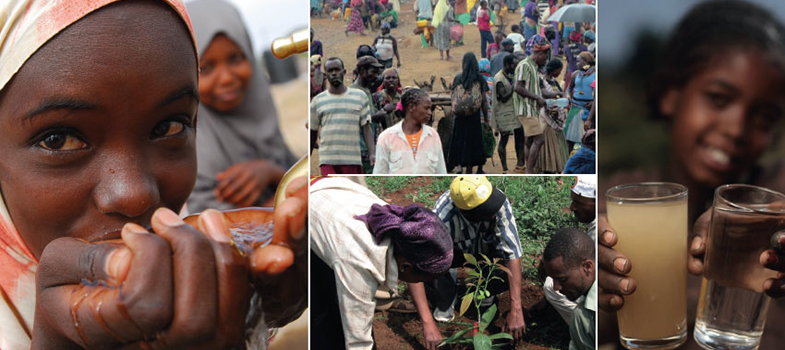10.3 Interventions to promote improved hygiene and sanitation
Based on the identification of barriers as outlined in Section 10.2, you can then plan appropriate interventions that aim to change people’s behaviour and practices. You learned about the four main approaches which are used to address such barriers in Study Session 9. A health promotion intervention or initiative is one that actively encourages positive behaviour, and is usually concerned with change that will occur over a relatively long period of time.
What are the four approaches to influencing behaviour that you learned about in Study Session 9?
The four approaches are individual behaviour change communication, social change communication, social mobilisation and advocacy.
A health promotion intervention would use these approaches for different purposes. Here are some examples of the aims they might be used to achieve:
- Behaviour change communication aims to promote child-friendly pit latrines in households, water treatment at the point of use, handwashing with soap, proper household water treatment, safe storage and disposal of waste water and food hygiene.
- Social change communication aims to increase community involvement in selecting appropriate design options for water and sanitation facilities, to change cultural beliefs and to promote community-led total sanitation (CLTS). You will learn more about CLTS in Section 10.4.
- Social mobilisation aims to bring stakeholders together to promote social marketing strategies in water and sanitation, handwashing, utilisation of locally available materials for construction of sanitation and hygiene facilities, technologies suitable for environments that have unstable and/or rocky soil and to introduce low-cost handwashing technologies near latrines.
- Advocacy aims to persuade decision makers to reduce the cost of clean water provision, to promote child, girl and disability friendly WASH services in schools, to improve maintenance of water points and to improve municipal waste collection services.
Now read Case Study 10.1 on open defecation and answer the question that follows.
Case Study 10.1 Open defecation
There are some communities in Ethiopia where people do not use a latrine even when one is available. This is because their tradition prohibits male and female members in the same household from using the same place to expel their faeces. It is culturally unacceptable for them to defecate on top of each other’s excrement. In particular the community considers the act of defecating on faeces of the household head or that of respectful community members as quite despicable. For example, children are not allowed to defecate on top of their parents faeces, and a wife would never defecate on top of her husband's faeces. This belief and practice has adversely affected the community's use of latrines and aggravated the widespread practice of open defecation.
Identify the type of barrier which best explains the issue raised in Case Study 10.1. Explain which of the following types of barrier it represents and why.
- a.Personal
- b.Socio-cultural barrier
- c.Infrastructure
- d.Economic
- e.Environmental.
The barrier is related to culture and tradition so it is a socio-cultural barrier (b).
Which type of communication intervention do you think would be the most appropriate for overcoming such a barrier and why?
- a.Behaviour change communication
- b.Social change communication
- c.Social mobilisation
- d.Advocacy.
To address socio-cultural barriers, social change communication (b) would be most appropriate because the behaviour change which is needed relates to social customs.
10.2.5 Environmental barriers
